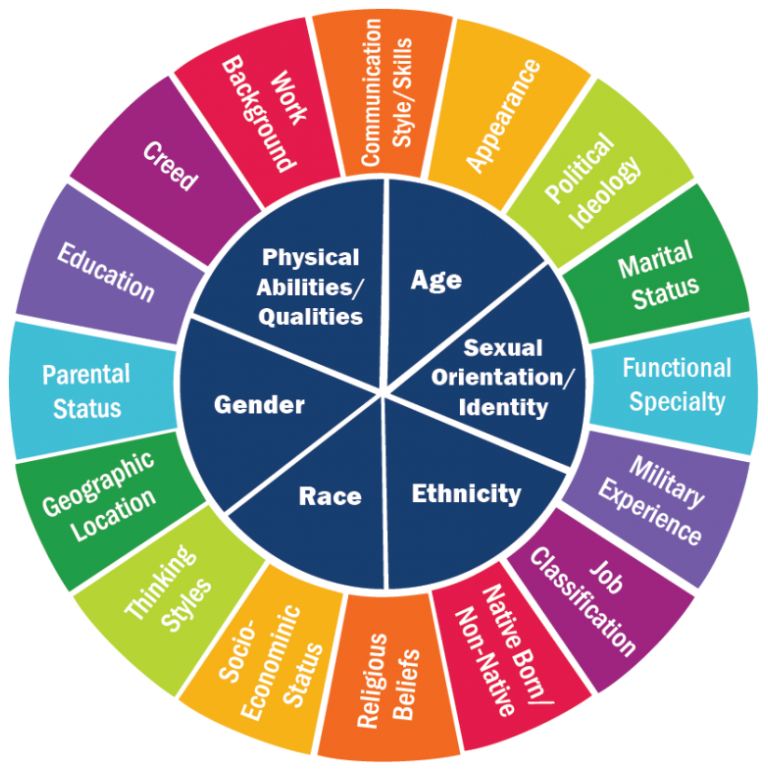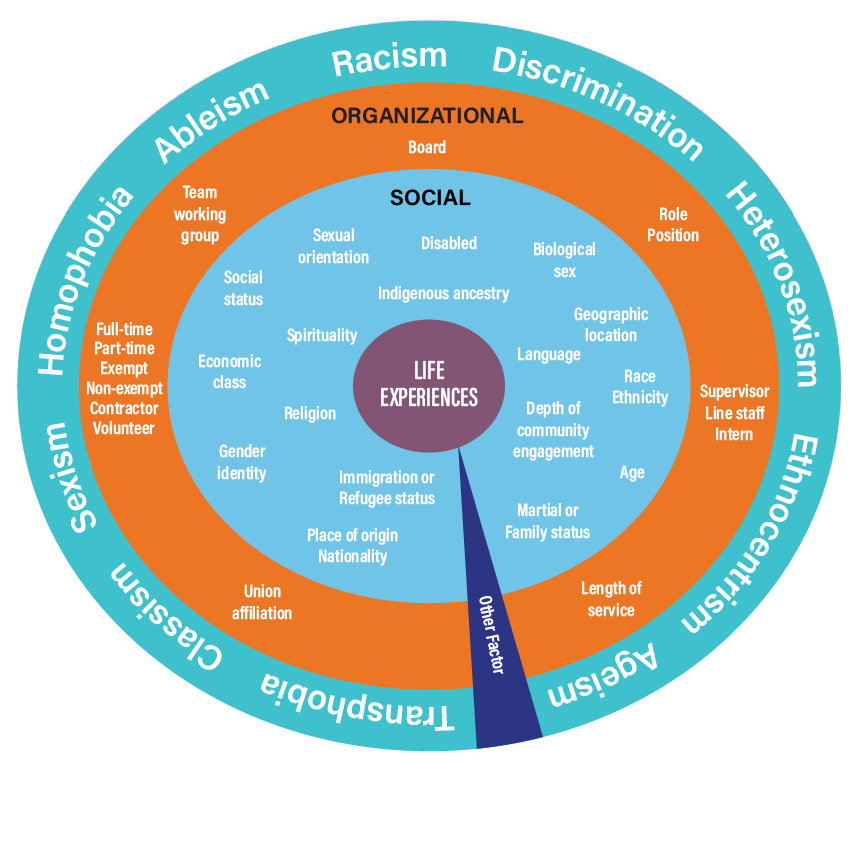CDE will be closed Wednesday, Nov. 27 through Friday, Nov. 29 for the Thanksgiving holiday.
You are here
Intersectionality
A Navigational Mirror for Improved Responsiveness & Bridging Divides
As conveyed in the previous sections, “driving” without knowing our blindspots can leave those around us vulnerable to mental and physical harm while perpetuating the very inequities we deeply wish to change. So, how do you advance on this equity journey? How do you create learning communities that enable all children to flourish and each family the security of knowing you will do right by their child? You have already taken the first steps by assessing your learning opportunities and taking the time to expand your awareness.
Our next step will be to develop ways of thinking about ourselves and members of our school learning community(ies) that enable us to build the competencies that foster understanding, trust, relationship, dialogue, respect, compassion, and action. Using an identity wheel is a helpful aid in this process.
Review the circle below.
(Identity | LBGTIQ Intersect, n.d.)
First look at the inner circle, represented by the blue pie-cut shapes.
Think about how you describe yourself or how you might be identified by others.
-
Then, ask yourself if you have felt powerful or powerless as a result of those identities? Was access or opportunity blocked because you hold that identity?
-
Or, for some of those same identities, did you feel like access or opportunity was something you rarely, if ever, had to consider?
-
Are there any instances where how you self-identify is different from how others identify you?
-
What other feelings come up for you either because of how you’ve identified yourself or because of how others identify you?
-
Did any of those identities cause you to feel shut out, ignored or not taken seriously?
Next, look at the outer circle and all the areas bordering the blue pie-cut shapes. Listed are the many other identities we carry on a day-to-day basis.
-
Consider the same questions as before.
-
Did any of those identities ever make you feel like your value or your culture’s value was in question?
-
Do you find the topic of one of those identities makes you feel like you are in a high-stakes situation?
-
Do you feel immense pride when you think about those identities? What has society said about that identity that makes you feel pride?
-
Do any of those identities make you feel judged, ashamed, not good enough?
By continually reflecting on the identity wheel and the preceding questions, we realize that people from very different backgrounds can have similar feelings. By acknowledging that, we become more receptive to what is said or shared, which enables us to be willing and effective active listeners (de Guzman et al., 2016). Through active listening, you can affirm that those you work with and serve have lived experiences just as valid and real as your own. As an active listener, you're better able to hear the heart of the message shared with you from school community members because of a lack of resistance or defensiveness that allows for you to focus on what is said, ask questions when you don’t understand and provide an answer, if requested.
Let’s look at another version of the identity wheel.
In the third ring from the center, we see several organization-based categories.
-
Which, based on your identities, give you an advantage? Disadvantage?
-
Were there certain rules you didn’t know about that prevented you from fitting in? Were you excluded? Segregated?
Finally, look at the outermost ring.
- Have you ever experienced discrimination in any of those areas as a result of your identities? If so, which area(s)? How did they treat you? What was the impact?
For many of us, the exercise above revealed some incredible opportunities and accomplishments that have been a source of pride. However, there were also considerable challenges or barriers we had to overcome. For some of us, they were discriminatory, and yet for others, those discriminatory practices contributed to serious inequities in our lives, such that we may still be trying to overcome the impact or wonder if we ever will.
Diving deep into our identities and probing our experiences can help open the door to understanding when students and families share their lived experiences and the impact particular processes or practices have on them. Although you can never completely walk in their shoes, becoming conscious of your own struggles as a result of your identity can help you empathize and become more sensitive to – or discerning of – the impact of a stance, action or policy at the school or district level. This is effective engagement – the second component in cultural competence. In the third component of cultural competence, school and district leaders engage in productive dialogue with community members where both learn from each other (de Guzman et al., 2016). We will further elaborate on communication methods in the next section, Understanding Others.
Reflection
Think about the insights you’ve gleaned as a result of analyzing identities. What changes can you implement in your interactions with all students and families to create a safe, inclusive, and equitable learning environment? What one change can you commit to making today?
Going Deeper: Review Principal I.J.’s Story. What would you recommend she do to change the experiences of students and families at her school?
For additional information about developing competencies:
Culturally Responsive Teaching: A 50-State Survey of Teaching Standards
We recommend retaking the Understanding Self section of the Self-Assessment after completing this section to see areas where you may have shifted.

This page is maintained by the Federal Programs and Supports Unit.
Please help us keep it current by reporting any issues, inaccurate information, or suggestions for improvements.









Connect With Us




